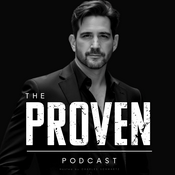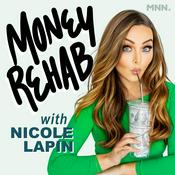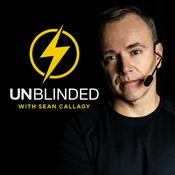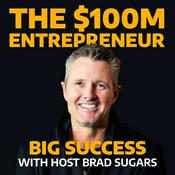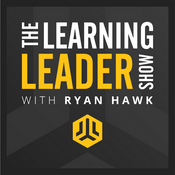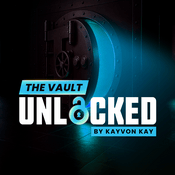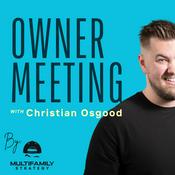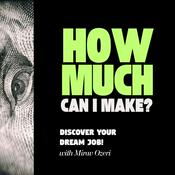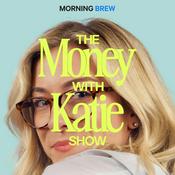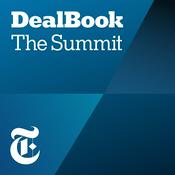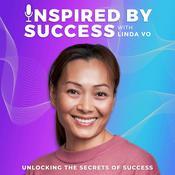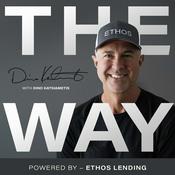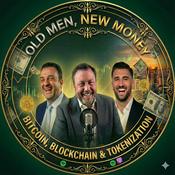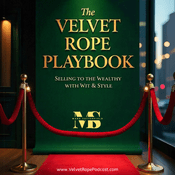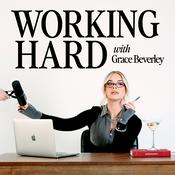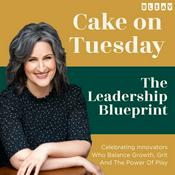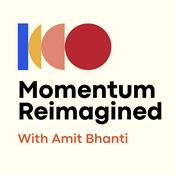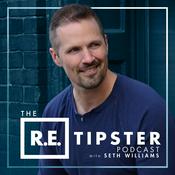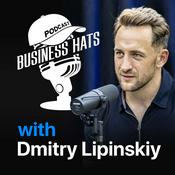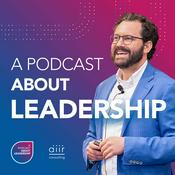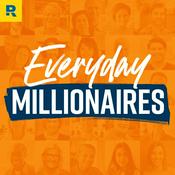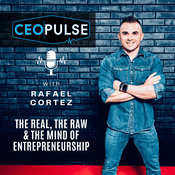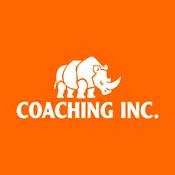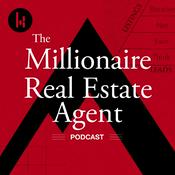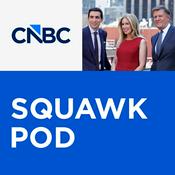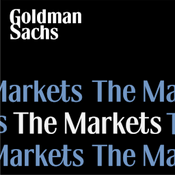115 episodes

She went from IC PM to CEO of $550M AI company Descript in 3 years
12/15/2025 | 44 mins.
Today’s EpisodeLaura Burkhauser started as an IC PM at Descript, the $550M AI video editing platform.Three years later, she’s CEO.She shipped AI features that worked.In today’s episode, you’ll hear the exact features Laura built, the eval framework she used, and her complete IC → CEO path.This might be the most actionable career episode you listen to all year.----Check out the conversation on Apple, Spotify and YouTube.Brought to you by:* Maven: Improve your PM skills with awesome courses* Pendo: #1 Software Experience Management Platform* Vanta: Automate compliance across 35+ frameworks like SOC 2 and ISO 27001* NayaOne: Airgapped cloud-agnostic sandbox* Kameleoon: Leading AI experimentation platform----Key Takeaways1. Map your user journey BEFORE picking AI features. DeScript identified pain points (retakes, eye contact, rambling), then asked "what just became possible with LLMs?" Build that intersection.2. Build prepackaged buttons, not blank chat boxes. Each DeScript AI tool is a carefully crafted prompt behind a single button that delivers reliable results every time.3. Use human evals on production data before shipping. Test on real customer data, ask "would I use this as a customer?" If yes, ship. If no, don't.4. The ultimate metric is export rate. If users apply your AI feature then remove it before exporting, it didn't meet their quality bar.5. Switch from buttons to chat when you hit 30+ parameters. When users wanted topic selection, speaker choice, and platform optimization, chat became better than buttons.6. Match your eval data to actual use case. DeScript failed with Studio Sound because they tested on terrible audio (vacuuming, jackhammers) when real users had laptop microphones. Different models handle different quality levels.7. Test agents with real customer language early. Don't use toy data or employee terminology. Mix sophistication levels—some advanced at video and AI, some complete beginners—to understand how real people prompt.8. Launch AI agents to new users first. Video editing is hard and many people quit. DeScript tested Underlord on activation and it won, so new users got it first before existing users.9. Choose breadth over depth for product-wide agents. DeScript chose breadth—Underlord works across all features because "we're not a point solution." Requires more context, tool coverage, and evals but serves the product vision.10. Earn founder trust by getting command, not by being strategic. Use the product extensively. Talk to customers constantly. When you speak, people think "Smart" and invite you to more rooms. Ship features before focusing on strategy.----Where to Find Laura Burkhauser* LinkedIn* Company----Related ContentPodcasts:* AI Product Leadership Masterclass* Conversation with the CEO and Founder of Bolt* This $20M AI Founder Is Challenging Elon and Sam Altman | Roy Lee, CluelyNewsletters:* Ultimate Guide to AI Prototyping Tools* AI Agents: The Ultimate Guide for PMs* How to Land a $300K+ AI Product Manager JobPS. Please subscribe on YouTube and follow on Apple & Spotify. It helps! This is a public episode. If you'd like to discuss this with other subscribers or get access to bonus episodes, visit www.news.aakashg.com/subscribe

The Ultimate Guide to ChatGPT Codex: OpenAI's Claude Code Killer
12/08/2025 | 1h
Check out the conversation on Apple, Spotify and YouTube.Brought to you by:* Jira Product Discovery: Move discovery and roadmapping out of spreadsheets* Vanta: Automate compliance across 35+ frameworks like SOC 2 and ISO 27001* Kameleoon: Leading AI experimentation platform* NayaOne: Airgapped cloud-agnostic sandbox* Product Faculty: Get $500 off the AI PM Certification with code AAKASH25Today’s EpisodeClaude Code hit $1B ARR in 6 months. But OpenAI is not just giving up.ChatGPT’s new Codex is the most powerful way for product managers to build prototypes. And it’s a far better way to use ChatGPT than the browser.So every PM should know how to use it.Today, I brought back the man behind my Claude Code tutorial, Carl Vellotti, for a full guide on how to use ChatGPT Codex for PMs:This might be the most important podcast you watch all year. (And not a single other PM podcast has even talked about this tool)Your Newsletter Subscriber BonusFor subscribers, each episode I also write up a newsletter version of the podcast. Thank you for having me in your inbox.Today’s guide covers:* Getting Started: The Non-Technical PM’s Guide to Codex CLI* Classic PM Tasks: Documents, Meetings & PRDs with Codex* Advanced Prototyping: From Vibe Coder to Vibe EngineerThis is your complete Codex roadmap.1. How to Get Started - The Non-Technical PM’s Guide to Codex CLIIf you’ve never touched a terminal, this is for you.1a. Open Codex in an IDECarl opens Cursor and shows files Codex creates in real-time.Workflow: Open project folder in Cursor → Terminal (Control + backtick) → Type codex.Now you see files created, preview documents, navigate visually.As Carl Says:“Open it in an IDE. Easiest way to see what it’s actually doing.”1b. The YOLO Mode HackCodex asks for permission constantly—every website, every command.Solution:codex --yoloFull access mode. No prompts. Just execution.“Haven’t broken my computer yet. We’re in this directory so it won’t leave.”1c. Codex vs Claude CodeSame task on both: Search web, summarize differences.Claude Code: 3 searches simultaneously, ~2 minCodex: One site at a time, asks permissions, ~4 minClaude Code is faster, hides details. Codex shows every command—more verbose.“It’s Apple versus Microsoft. Claude does things in a nicer interface. Codex shows you everything.”2. How to Handle Classic PM Tasks with CodexCodex shines at daily PM work.2a. File Analysis Without UploadingRun Codex from a folder, it accesses everything. No uploading.Carl has demo folder (Taskflow) with interviews, notes, PRDs.“What user interviews completed?” → Codex lists them“Top 3 pain points?” → Returns: voice input reliability, integration gaps, template workflowCreates document with direct quotes—no manual file providing.2b. Template-Driven WorkflowsSolution: Create /templates folder with markdown files.Example: Discussion Points, Action Items, Risks & Blockers, Next StepsUse: Summarize @meeting-notes using @templateSame format every time. Works for PRDs, one-pagers, research summaries.2c. Socratic Questioning for Better PRDsProblem: Asking Codex to write a PRD produces garbage without proper thinking.Solution: Socratic template makes Codex ask YOU questions first.Questions: “Why is this helpful? Data, feedback, or strategic?” “What must work for V1?” “Edge cases?”You answer. AI embeds your thinking.Then Codex reviews context, templates, example PRDs, and writes.Carl: “Goes from kind of there to a really good PRD almost right out of the box.”3. Advanced Codex Techniques for Future Vibe EngineersThis is where Codex separates from the browser.3a. Design Systems with StorybookVibe coder problem: “Make title pink” → wrong shade → 20 iterations → still jankyVibe engineer solution: Storybook (npm run storybook)See components visually, change colors instantly, see changes live without redeploying.Carl changes recipe title to pink: read-only mode to see plan, then YOLO mode to execute. Updates in Storybook immediately.Pre-built components: Use Shadcn UI for production-grade React components. Calendar, date picker, dropdown—all done.“All the logic and difficult things, you get for free.”3b. Test-Driven Development is The UnlockProblem: AI says “Done!” but it’s broken. AI will lie and set variables to true to pass tests.Solution: Write tests BEFORE building.Red-Green-Refactor: Tests fail → Build until pass → Improve codeCarl’s macro calculator:Tests: API returns calories, empty recipe returns null, missing data shows “N/A”, API fails retries 3x, divide by servings correctlyTold Codex: “Build to make tests pass.”35 minutes. Zero touch. All tests green. Feature worked.Carl: “If you write tests FIRST, they can’t cheat.”3c. An Example - The TikTok Recipe BotCarl built this for his girlfriend: TikTok recipe extractor.Problem: Recipe videos on TikTok. No written recipe. Just “comment and I’ll DM.”Solution: Paste URL → Codex downloads video → Sends to Gemini (only model that processes video) → Gemini extracts recipe → Codex formats to PDFHow: Detailed implementation spec: architecture, data flow, APIs, error handling, retry logic, tests.Gave to Codex in GPT-5 Codex mode. Left 35 minutes.Built entire feature. Tests passed. Worked first try.Carl: “First time I saw the dream—give it a medium-sized feature and it just builds it.”Where to Find Carl Vellotti* Linkedin* X (Twitter)* Instagram* NewsletterRelated ContentPodcasts:* Claude Code Tutorial* Windsurf Tutorial* AI Prototyping TutorialNewsletters:* Ultimate Guide to AI Prototyping Tools* AI Agents: The Ultimate Guide for PMs* How to Land a $300K+ AI Product Manager JobPS. Please subscribe on YouTube and follow on Apple & Spotify. It helps! This is a public episode. If you'd like to discuss this with other subscribers or get access to bonus episodes, visit www.news.aakashg.com/subscribe

How to Upskill from Core PM to Great AI PM: Masterclass from Pendo CEO Todd Olson
12/03/2025 | 1h 11 mins.
Today’s EpisodeAI PM jobs pay 30-40% more than regular PM jobs.But here’s the problem: You can’t just slap “AI PM” on your resume.Todd Olson has spent 28 years in product management, VP of Product at a public company, then founder of Pendo, now a $2.5B product management platform working with everyone from American Cancer Society to Zendesk.----Check out the conversation on Apple, Spotify and YouTube.Brought to you by - Reforge:Get 1 month free of Reforge Build (the AI prototyping tool built for PMs) with code BUILD----Key Takeaways1. AI PM market exploded - Last year 10% of PM jobs were AI PM jobs. This year it's 20%. They pay 30-40% more because of scarcity and skill level. But Todd warns: "You better damn well be good and know what you're talking about if you're gonna call yourself an AI PM because we are going to interrogate the hell out of it."2. Real requirement is production at scale - Not "I built prototype at 1-person startup." Hiring managers want 20,000 paying B2B customers experiencing your AI feature successfully. To get there: upskill internally at current company by shipping AI features on your roadmap.3. The 5-layer technical pyramid - Foundation: AI/ML fundamentals, data pipelines, prompt engineering. Middle: Observability (trace analysis), cost optimization, evals. Top: Product strategy, stakeholder management, leadership. You need to climb all 5 layers. Most PMs stop at layer 1.4. RAG is table stakes - "RAG is the de facto way to build." You ingest data, create embeddings, feed into vector database, look up relevant context, pass to LLM. Todd: "If you put too much in context window, just like a human, you get confused. You want to give the right context."5. PM-engineering tension is real - At startups, PMs do trace analysis. At large companies, engineering managers push back: "This is my world. I don't want some PM shadowing me." Similar to Data Dog—most PMs don't have login. Know the line. Be fluent but respect boundaries.6. But evals are YOUR domain - Unlike trace analysis, evals are where PMs are the expert. "The PM is probably the best-suited human being to author and manage eval sets." You understand user and business needs. Engineers don't have that context. This is must-have competency now.7. Cost optimization will matter - Some AI companies have sub-15% gross margins. Traditional software is 70-80%. Todd: "It's not a business at sub-15%." Eventually you'll rearchitect systems because infrastructure is too costly. Rule: when something's faster, it's cheaper (both buying compute).8. Solve hard problems, not shiny objects - Todd's test: "Are we gonna do much better job than ChatGPT out of box? Why would we just wrap that and slap Pendo logo on it?" His discovery agent example: hard part isn't interviewing customers—it's finding which to interview, prioritizing, scheduling. Automate that workflow.9. Kill bad features ruthlessly - Todd shipped features couple years ago that weren't great and turned them off. "Too often we hold on to something. Turn them off. Be unafraid. The more stuff in your product, the worse the experience is by default."10. Control the narrative with boards - Don't show up with no story and get crushed with random requests. Todd: "Show them how you actually run your business. I want to see what you're looking at, not something just made for me." Think deeply about how each bet drives shareholder value.----Where to Find Todd Olson* LinkedIn* Company* X----Related ContentPodcasts:* How to Become, and Succeed as, an AI PM | The Marily Nika Episode* If you only have 2 hrs, this is how to become an AI PM* Complete Course: AI Product ManagementNewsletters:* How to Become an AI Product Manager with No Experience* How to Write a Killer AI Product Manager Resume* How to become an AI Product Manager----PS. Please subscribe on YouTube and follow on Apple & Spotify. It helps!----If you want to advertise, email productgrowthppp at gmail. This is a public episode. If you'd like to discuss this with other subscribers or get access to bonus episodes, visit www.news.aakashg.com/subscribe

How Product Leaders Should Use AI, with Webflow CPO Rachel Wolan
11/30/2025 | 21 mins.
Today’s EpisodeThere are tons of tutorials about Claude Code and Cursor for IC PMs.But what about leaders?Today’s episode is a masterclass on both sides of AI product leadership. How to be a productive AI leader and how to ship AI-native features at scale.Rachel Wolan is the Chief Product Officer at Webflow, the $4 billion company powering TED Talks, SoundCloud, and Reddit.Rachel walks through building her agentic Chief of Staff live, sets up a LinkedIn post generator from scratch, and shares the brutal lessons from launching Webflow’s AI app generator.----Brought to you by:Linear: The task management platform dethroning Jira-----Key Takeaways:1. IC CPO means self-serving answers - "As a leader, you are able to get your own answers to practically any question." No waiting on data scientists. No back-and-forth with analytics. You have tools to self-serve insights, make analysis, automate workflows. Model behavior for your team to inspire them.2. Calendar agent analyzes time - Runs weekly with prompt: "Analyze my calendar for last two weeks. Where could I delegate?" Returns delegation opportunities, red flags (double bookings, context switching), what to cut next week. Rachel gives output to EA. Spot on when shown live.3. Email agent watches behavior - Complete inbox access. Runs triage, archives junk (calendar notifications, marketing), pins important messages, creates draft replies. Twist: watches behavior. If email sits too long, it notices. Caught meeting missing link. Rachel's rule: agent recommends, she approves. No autonomous sending.4. Analytics agent via MCP - Connected Claude Code to Snowflake via MCP servers (not officially supported repos, just fed them to Claude Code). Ask natural language questions, get SQL executed real-time. "How many sites does Shirts.com have?" Claude writes query, authenticates via SSO, returns answer. Data scientist in pocket.5. Accept the adoption curve - Your org follows standard curve: early adopters, early majority, late adopters, laggards. Create pathways for everyone to ascend ladder at their pace. Don't force everyone to be you. Rachel to team: "I only want to see prototypes when you have meetings with me." Creates culture investing in prototype quality.6. Builder Days strategy - Give everyone access: Claude Code licenses, MCP to Snowflake/Tableau, Figma Make, Cursor with design system. Run Builder Days where champions help others through technical hurdles. Everyone demos something outside comfort zone. Results: 0% to 30% of designers using Cursor weekly after first Design Builder Day.7. Rewrite career ladder - Webflow rewriting career ladder to make AI-native work an expectation, not nice-to-have. Create right incentives. Make sure people supported. Avoid AI for AI's sake. Example: Two designers built similar prototypes. Director caught early: "Go harmonize your prototypes now." Easier now than late in product cycle.8. MVO before MVP framework - Most teams: Feature → PRD → Design → Ship. Rachel flips it. MVO (Minimal Viable Output) before MVP. Get model's output right FIRST using RAG, prompt engineering, context engineering. Only then build feature. "If you don't have desired outputs, don't spend time productizing the AI feature."9. Evals are now your job - Brutal story: Webflow's AI app generator 2 weeks from launch. Rachel tested it. Agent kept dying. Realized: changed underlying model, evals didn't have coverage. Evals = test cases for models. Want dream evals (should pass) and edge cases (should fail). Use BrainTrust. Teaching PMs to write evals is part of AI PM toolkit now.10. Build on your strengths - Framework: See trend → Is it applicable to customers? → What's YOUR core competency? Webflow's strength: bringing visitors to front door via CMS. Built production-grade app generator (not prototype like Lovable). Uses your brand, CMS, hosting, security. "We're bringing a way to prompt an app to production." Don't copy trends, leverage unique strengths.-----Where to Find Rachel Wolan * LinkedIn* Website* X----Related Content* Claude Code Tutorial for AI PMs* AI Agents for PMs in 69 Minutes, with IBM VP* 5 AI Agents Every PM Should Build, with CEO of LindyNewsletters:* AI Evals Guide for PMs* Prompt Engineering for AI Agents* AI Agents: The Ultimate Guide for PMs----PS. Please subscribe on YouTube and follow on Apple & Spotify. It helps----If you want to advertise, email productgrowthppp at gmail. This is a public episode. If you'd like to discuss this with other subscribers or get access to bonus episodes, visit www.news.aakashg.com/subscribe

Context Engineering: The Secret Behind $10M ARR in 60 Days, with Kuse Founder Xiankun Wu
11/21/2025 | 43 mins.
Today’s EpisodeWhy do your prompts keep failing?You write the perfect prompt. The AI spits out garbage. You tweak. You iterate. You spend hours getting mediocre results.XK built Cues to $10M ARR in 60 days with zero VC funding and zero advertising. Today, he’s dropping the complete playbook:-----Check out the conversation on Apple, Spotify and YouTube.Brought to you by:Reforge http://reforge.com/aakash-----Key takeaways:1. Context engineering beats prompting - One prompt won't work. Like hiring someone who knows nothing about your company—impossible to get results in 5 seconds. Accumulate context, build knowledge base, let AI know you over time. Combines system prompts, user prompts, memory, and RAG.2. The Mom analogy - Your mom knows your preferences, goals (grow taller for basketball), what makes you happy. She doesn't need detailed instructions. That's context engineering. AI that knows you creates better results and positive loops.3. Threads growth hack - Created hundreds of accounts posting use cases daily. Zero ad spend. Why it works: Threads gives traffic generously, less crowded than X, no creator hierarchy. Result: 3M impressions/month, hundreds of daily visits. Targeted Taiwan/Hong Kong markets.4. MVO before MVP - Traditional: Feature → PRD → Design → Ship. Xiankun's way: Get model output right FIRST. Use RAG, prompting, fine-tuning for Minimal Viable Output. Then productize. "If no desired outputs, don't spend time productizing."5. Visual context engineering - Use spatial tools: draw squares, graphs, sketches. AI understands spatial relationships. Unlike ChatGPT where files disappear, Kuse gives 2D space to store/reuse. Graphic operating system for AI that compounds.6. The pivot story - Started as design agent. Users uploaded documents instead. Knowledge base usage far exceeded design. Pivoted to horizontal knowledge-based AI. Listen to your users.7. Why X sucks for growth - Structured creator hierarchy. Can't farm traffic without famous connections. Good for VC fundraising, terrible for user acquisition. Threads and Instagram are underserved with real users.8. Compounding context power - Regular chatbots: one-off, context disappears. Kuse: processes files when you're away, pre-prepares everything. Like having ingredients ready vs ordering each time. Each interaction improves.9. Trading company origin - Co-founded YC company, created trading company, made money, funded Kuse with profits. Built without VC pressure. "Entrepreneurship is a game of focus." Building without chasing VC gives fresh perspective.10. Future vision: productivity playground - "Not building productivity tool, building playground." When AI takes jobs (2030-2040), people need fulfillment. Kuse is amusement park where people pretend to work, feel satisfaction. Going to pure pleasure, not efficiency.----Where to Find Xiankun Wu* LinkedIn* Threads* Company----Related ContentPodcasts:* We Built an AI Employee in 62 mins* Conversation with the CEO and Founder of Bolt* This $20M AI Founder Is Challenging Elon and Sam Altman | Roy Lee, CluelyNewsletters:* Context Engineering Guide* Prompt Engineering in 2025* How to become an AI Product Manager----PS. Please subscribe on YouTube and follow on Apple & Spotify. It helps!----If you want to advertise, email productgrowthppp at gmail. This is a public episode. If you'd like to discuss this with other subscribers or get access to bonus episodes, visit www.news.aakashg.com/subscribe
More Business podcasts
Trending Business podcasts
About The Growth Podcast
Listen to The Growth Podcast, Proven Podcast and many other podcasts from around the world with the radio.net app
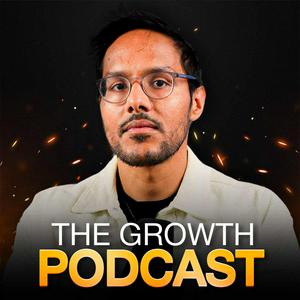
Get the free radio.net app
- Stations and podcasts to bookmark
- Stream via Wi-Fi or Bluetooth
- Supports Carplay & Android Auto
- Many other app features
Get the free radio.net app
- Stations and podcasts to bookmark
- Stream via Wi-Fi or Bluetooth
- Supports Carplay & Android Auto
- Many other app features


The Growth Podcast
download the app,
start listening.
